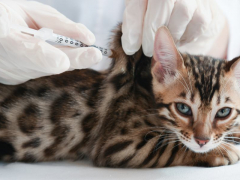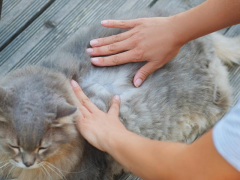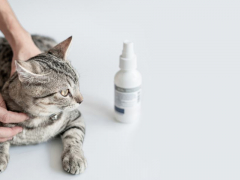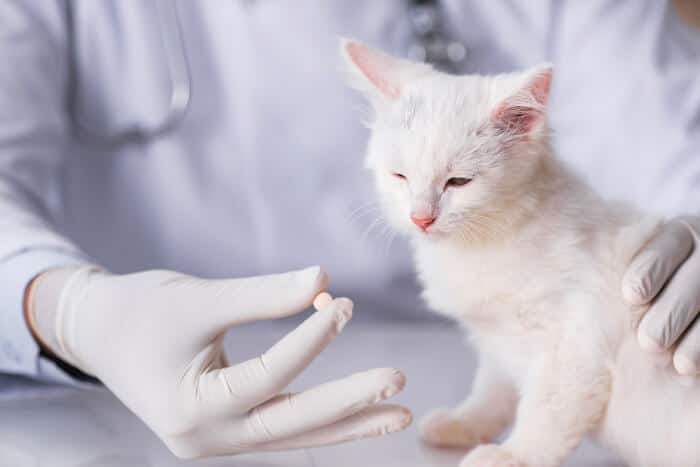
Amoxicillin is a common antibiotic prescribed for both cats and dogs to address a variety of bacterial infections. Amoxicillin has many brand names as well as generic forms.
Amoxicillin For Cats Overview

In this article, you’ll learn what amoxicillin is, the types of infections it may be used for in cats, potential side effects, and some other useful info and frequently asked questions.
What Is Amoxicillin?
Amoxicillin is an antibiotic called an aminopenicillin. As a bactericidal antibiotic, it has the ability to kill certain strains of bacteria causing infections.
Amoxicillin may be used for infections of the respiratory tract, urinary tract and bladder, some gastrointestinal infections, and infections of the skin and soft tissues. Because there are many antibiotics out there, a veterinarian should always be responsible for deciding which one is best to use for a particular patient.
Because amoxicillin-clavulanate, commonly known as the brand Clavamox, has a broader spectrum of action against some bacteria, it is more commonly used than regular amoxicillin, especially for cats.
What Does Amoxicillin Do for Cats?
As a bactericidal antibiotic, amoxicillin has the ability to kill certain kinds of bacteria causing infections.
In kitties, it may be used most often for upper respiratory infections, urinary tract infections, skin infections, or infections resulting from a bite wound or injury.
Amoxicillin works by binding directly to certain parts of the cell membrane of susceptible bacteria, inhibiting development of the cell wall and making the bacteria unstable, thus killing them.
It’s very important to note that amoxicillin is not effective against viral infections, a common cause of upper respiratory conditions in cats. Therefore, it’s always important for a vet to decide if use of an antibiotic is warranted.
Side Effects of Amoxicillin for Cats
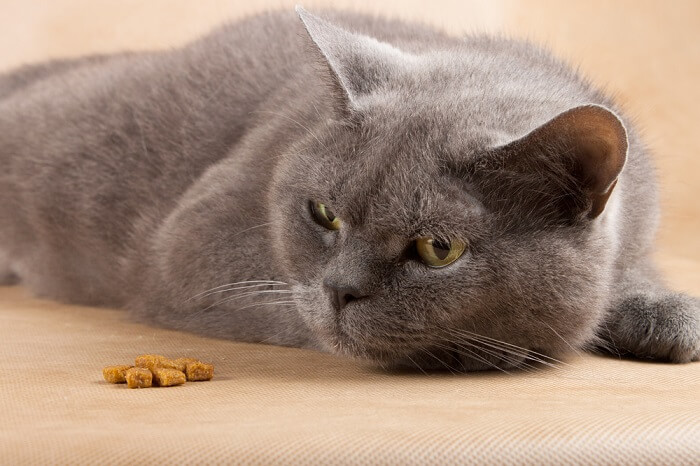
The side effects of amoxicillin are usually mild and infrequent, involving gastrointestinal upset like vomiting and diarrhea.
Side effects of amoxicillin in cats are typically mild and infrequent but when they do occur, most often include digestive upset, like vomiting, diarrhea, and a decrease in appetite.
Oral amoxicillin, like many broad-spectrum antibiotics, can alter the normal, beneficial bacteria in the digestive tract, which is often a cause of digestive upset if it occurs.
Giving amoxicillin to your kitty around the time of a meal can help to offset these possible effects. If side effects like these continue, it’s important to ask your vet for further advice.
While discontinuing an antibiotic may relieve the side effects, this will also leave the original bacterial infection untreated. If your kitty is dealing with a very concerning infection, your vet may, for example, recommend starting a probiotic as opposed to discontinuing an antibiotic.
Severe allergic reactions to amoxicillin are extremely rare but can include rashes, hives, fever, and changes to red and white blood cell counts. To the rare kitty this might happen with, these effects would occur with even a very small dose. In other words, if your kitty is doing well at a prescribed dose, an accidental extra dose or overdose would not cause these effects.
Also Read: 10 Best Probiotics For Cats
Amoxicillin for Cats Dosage
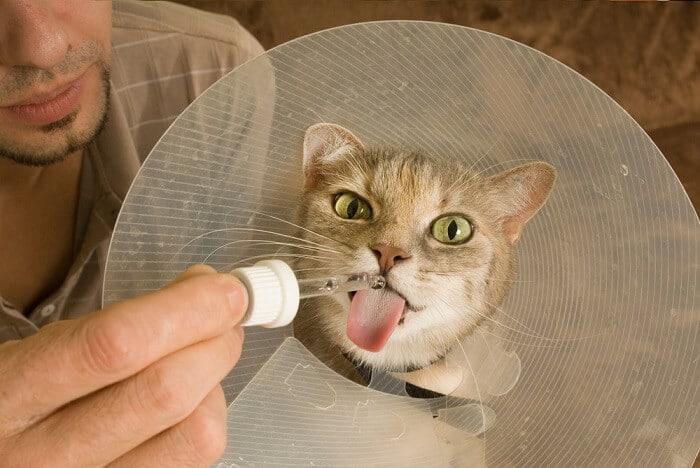
Follow the dosing instructions provided by your veterinarian. Most vets call for a dose every 8-12 hours.
The FDA-approved, labeled dosage for amoxicillin for cats is 50 milligrams per cat or 11-22 milligrams per kilogram (about 5-10 milligrams per pound). This labeled dose is for specific bacterial strains contributing to upper respiratory tract infections, genitourinary tract infections, GI tract infections, and skin and soft tissue infections.
Interestingly, the labeled dosage for cats for amoxicillin calls for giving it just once a day. However, this dosage is generally no longer considered in veterinary medicine to be effective for most infections.
Most vets are using it off-label at every 8-12 hours, similar to the labeled dosage for dogs. If your vet decides to use amoxicillin for your cat, they will decide on a recommended dosage amount and schedule that is most appropriate depending on the type of infection being addressed.
It is very important to remember that dosage amounts and how long a cat is treated for will vary depending on the size of the cat and the type of infection that is present. These decisions should be left to an attending veterinarian.
It is also very important to follow a veterinarian’s instructions carefully when using any antibiotic. Using an antibiotic when one is not appropriate (i.e. for a viral infection or behavorial/stress-related causes of inappropriate urination) or stopping an antibiotic sooner than the prescription calls for can contribute to bacteria becoming resistant to an antibiotic.
If your cat’s signs of illness have not improved within 5 days, it’s important to touch base with your vet to determine best next steps. If your cat does show signs of improvement or even if signs of illness appear to resolve, always make sure to finish out the fully prescribed course of antibiotics.
Amoxicillin typically comes in both a liquid form as an oral suspension as well as tablet form. Your veterinarian may have a preference of which form to use, or may leave the dosage form up to you depending on which will be easier to administer.
If your kitty will take a pill mixed with or hidden in food or a treat, this is often easiest and involves the least amount of struggle. However, if your furry friend is the type that will eat everything in the bowl but the tablet and leave it at the bottom, you may need to consider liquid if you are not adept at administering a pill directly into your cat’s mouth for her to swallow it.
The liquid form typically needs to be refrigerated. It is often reconstituted with water at your vet’s practice when you receive it. If your vet prescribes two bottles, they should provide you with instructions on how to mix up the second bottle. Because liquid amoxicillin should be discarded after 14 days, it is important not to mix up a new bottle until you are ready to use it.
Conclusion
Amoxicillin is one of the oldest, tried and true antibiotics we have and although newer antibiotic classes have been developed, amoxicillin still has valuable clinical uses.
However, it’s really important to make sure it is only used when dispensed or prescribed by a veterinarian, and that all prescribing instructions are followed. Indiscriminate use of any antibiotic can lead to resistant bacterial populations, which make treating infections more difficult.
Always make sure to give an antibiotic prescribed by your vet for the full number of days indicated, even if your kitty looks like he’s feeling better.
Drug Dosing Disclaimer: We are only able to provide doses for medications that are FDA approved for use in cats and only as the label guidelines dictate. For medications that are used off-label we can only provide guidelines and safety information for use. Safe and appropriate dosing for off-label medications can only be determined by a primary care veterinarian.
We encourage you to work with your veterinarian to determine if a particular medication is appropriate for your cat. Changing or adjusting a dose for your cat on your own without consulting with a veterinarian can carry risk. We do not encourage use of medications prescribed for human use in pets without first consulting with a primary care veterinarian.
